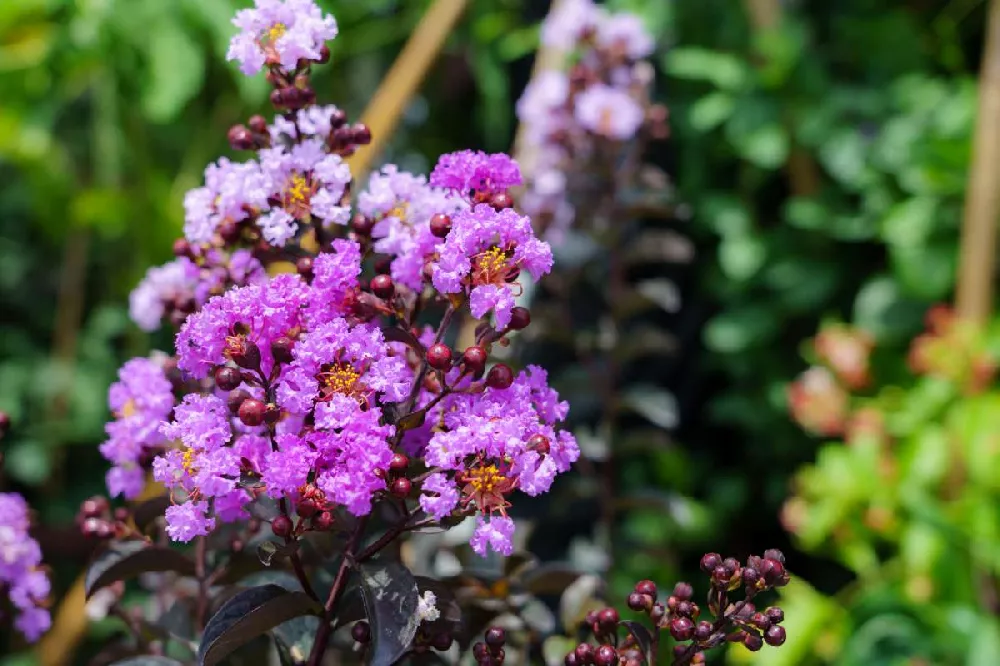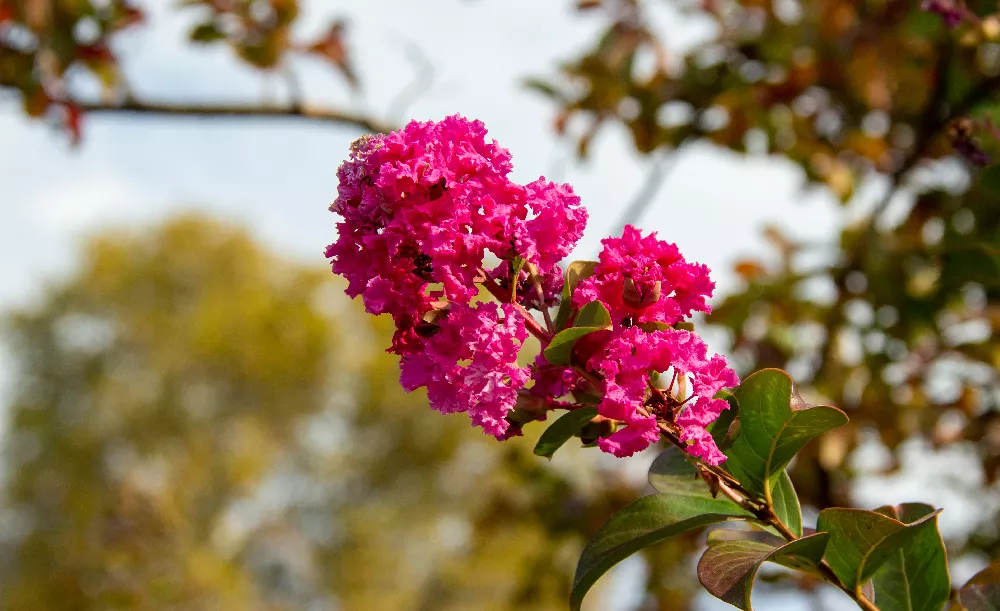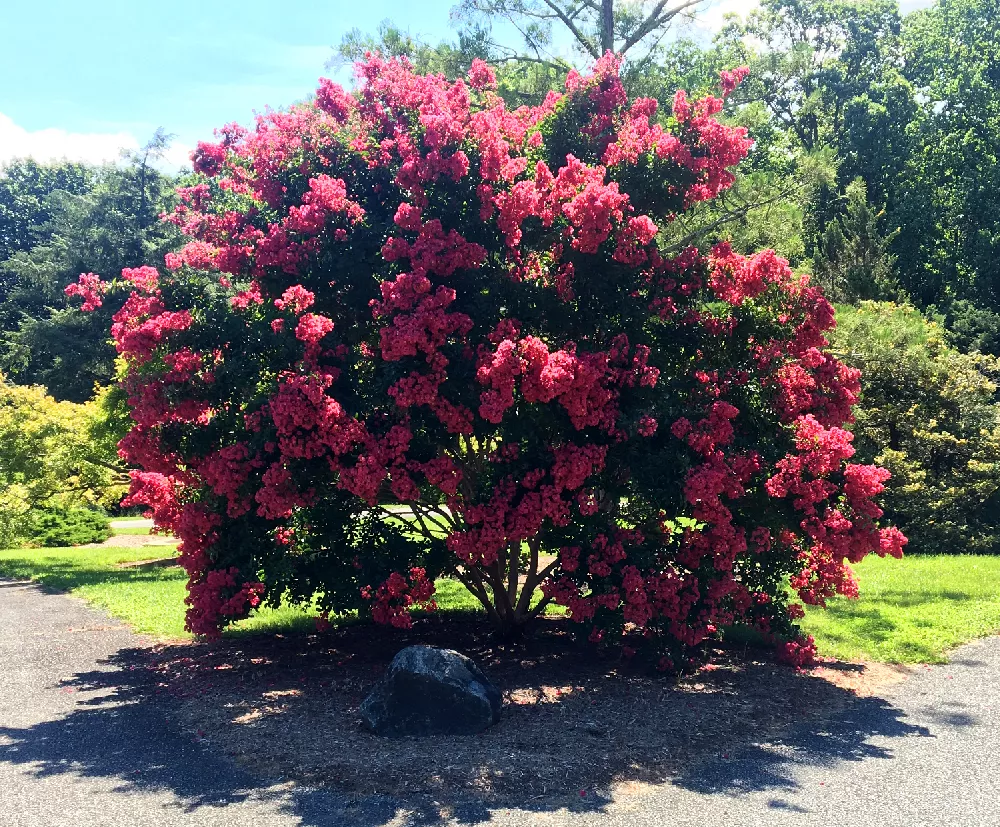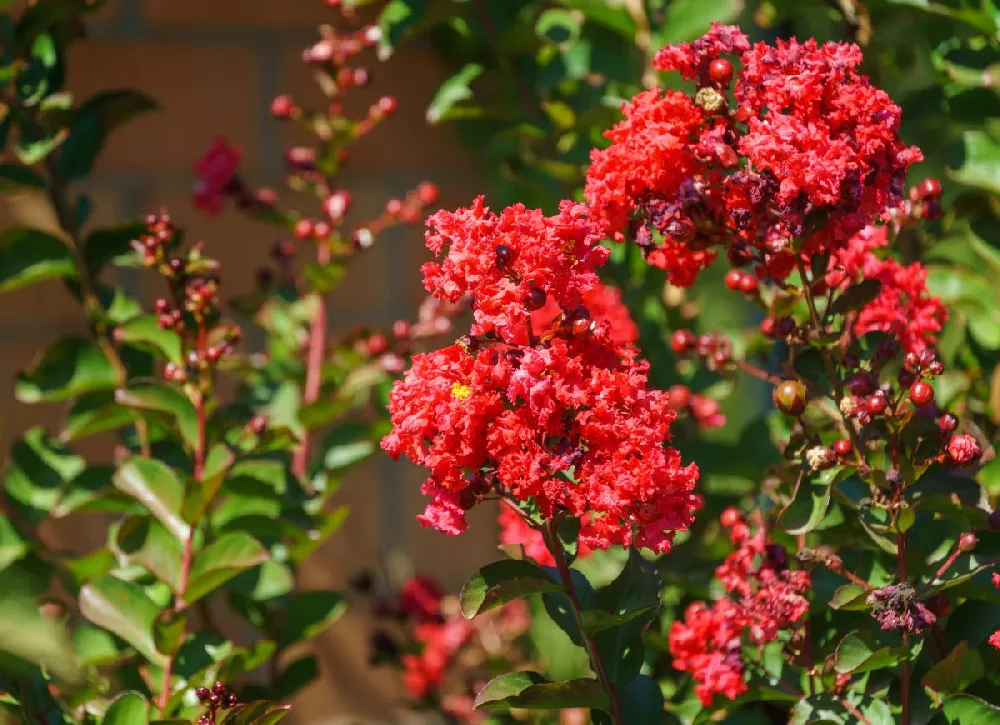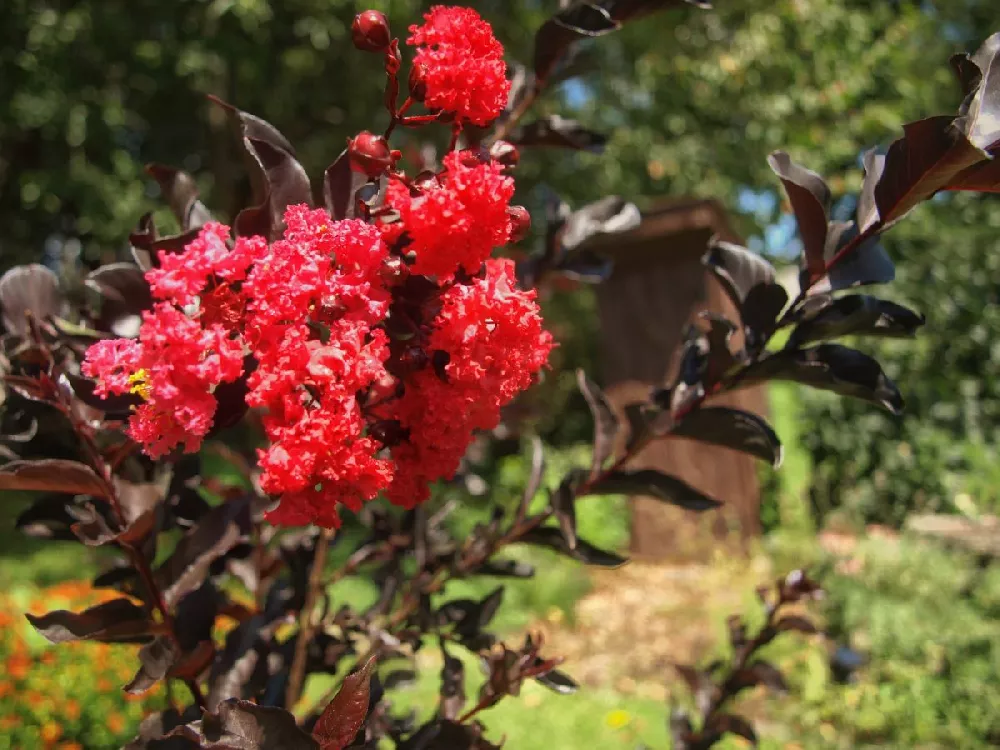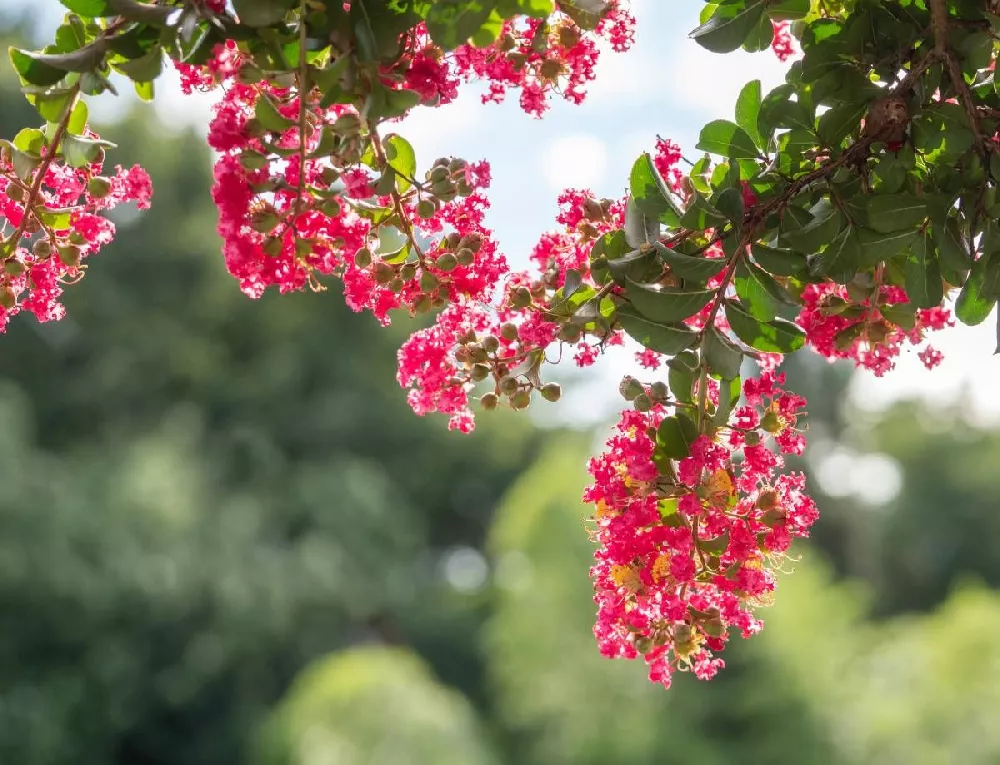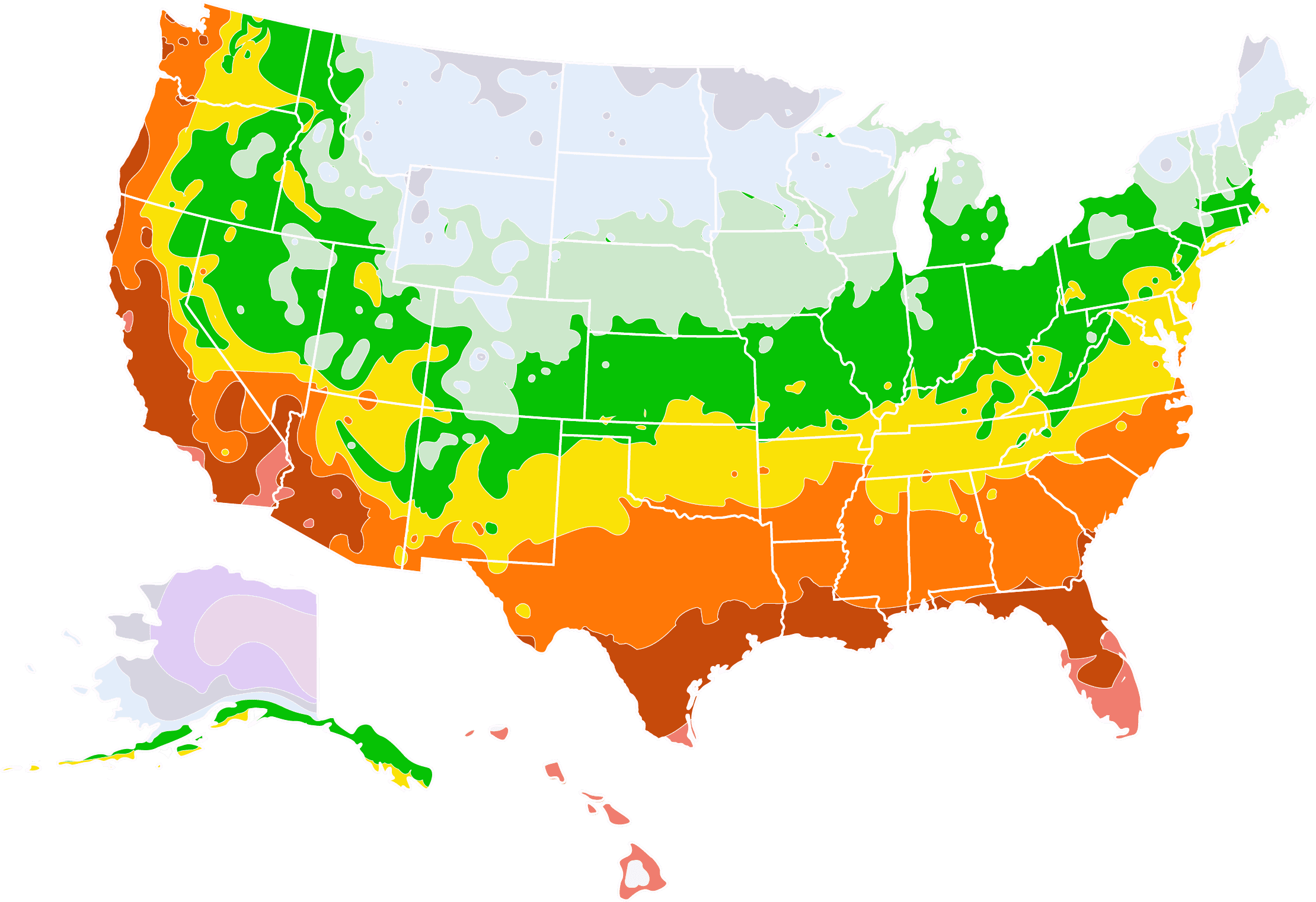- Home >
- Ornamental Trees >
- Black Diamond® Lavender Lace™ Crape Myrtle Tree
Black Diamond® Lavender Lace™ Crape Myrtle Tree for Sale - Buying & Growing Guide
To say that the Black Diamond® Lavender Lace™ crape myrtle tree can add contrast to any garden would be an understatement. The flowers of this plant, Lagerstroemia indica 'PP 27335,' are unlike any other with their clusters of bright purple petals and yellow accents. Those flowers look even better as they juxtapose the dark foliage of this plant. The Black Diamond® Lavender Lace™ crape myrtle tree also has a lovely multi-stemmed form that only adds to the gracefulness of this plant.
- The flowers of the Black Diamond® Lavender Lace™ crape myrtle tree are bright purple.
- The incredibly dark foliage of this plant makes for a fantastic contrast.
- This tree has a small overall size and an attractive multi-stemmed form.
Enter your zip code to find nearby stores that may carry this plant.
Plant Care
Sunlight

The Black Diamond® Lavender Lace™ crape myrtle tree should grow in an area that receives full sunlight, about 6 hours or more per day.
Watering
A Black Diamond® Lavender Lace™ crape myrtle tree will usually need water about once per week throughout the growing season.
Fertilizing

Feed this tree with a balanced fertilizer once per year during the early spring.
Planting and Care
Planting instructions
Find a growing location that receives at least 6 hours of sunlight per day and has well-draining soils with a decent amount of organic nutrients. Then, to plant your Black Diamond® Lavender Lace™ crape myrtle tree, dig a hole that is as deep as the root ball is tall and about twice as wide. Water the roots while you backfill the hole and complete the job by covering the area with a layer of organic mulch, which will help maintain adequate soil moisture.
Watering and nutrients
Just after planting your Black Diamond® Lavender Lace™ crape myrtle tree, you should water it multiple times per week during the first growing season. Following the first growing season, you can reduce your watering schedule to about once per week, increasing that rate as needed during hotter weather. To feed this tree, apply a balanced fertilizer once per year during the early spring. For the best results, the fertilizer you use should have equal amounts of nitrogen, phosphorus, and potassium.
Pollination
As is true of crape myrtles in general, the Black Diamond® Lavender Lace™ crape myrtle tree is a self-fertile plant, meaning that a single tree is capable of pollinating itself successfully without the need for an additional tree. The Black Diamond® Lavender Lace™ crape myrtle tree should have a long bloom period during which many insects, including bees, will arrive to transfer pollen from the male flower structures to the female ones. However, the resultant fruits are neither attractive nor commonly eaten.
Pruning
Pruning for the Black Diamond® Lavender Lace™ crape myrtle tree should take place in late winter and should include both functional and aesthetic goals. Firstly, you should be sure to preserve this plant’s health by removing any part that is dead, damaged, or diseased. It is also beneficial to encourage a graceful growth habit by maintaining only a few main trunks and removing many of the lowest lateral branches. You can also expect suckers to appear at the base of this tree, which you should remove.
Pests, diseases, and animals
Overall, crape myrtles, including the Black Diamond® Lavender Lace™ crape myrtle tree, have relatively few problems with pests and diseases throughout their lives. However, that does not mean that an infestation or infection is impossible. Instead, common garden insects like aphids and Japanese beetles can harm your Black Diamond® Lavender Lace™ crape myrtle tree at times. Additionally, infections such as powdery mildew and mold can also arise in this plant. Despite that, proper maintenance should prevent most of these complications.
Achieving maximum results
The Black Diamond® Lavender Lace™ crape myrtle tree presents you with an opportunity to create a brilliant point of contrast in your garden. As such, it is wisest to take care when choosing a planting location for this tree to ensure that it pairs well with the plants around it, thus maximizing its visual effect. It is also helpful to know that this plant has decent drought tolerance, especially when mature, meaning that it could be a great option for areas where other plants have struggled to get enough moisture from the soil.
FAQs
Does the Black Diamond® Lavender Lace™ crape myrtle tree bloom on new wood?
Like other crape myrtle varieties, the Black Diamond® Lavender Lace™ crape myrtle tree sets its flower buds on new growth. What that means is that you can feel secure about pruning this plant in late winter and early spring without the risk of removing the coming season's blooms. These buds will be entirely safe since they develop later in the spring and open in summer.
How long is the bloom time for a Black Diamond® Lavender Lace™ crape myrtle tree?
One major selling point for the Black Diamond® Lavender Lace™ crape myrtle tree is that this tree's flowers are not only impressive, but they are also very long-lasting. In most cases, these blooms will open during the early to mid-summer and will last for a few months. It is common for many crape myrtles to hold their flowers for about 100 days, but some will hold them for significantly longer.
Where does the Black Diamond® Lavender Lace™ crape myrtle tree survive?
The ideal range for the Black Diamond® Lavender Lace™ crape myrtle tree is hardiness zones 6 through 10. This means that this tree can survive throughout all of the southern United States, throughout most of the west, and some parts of the northeast. Any time you try to plant a Black Diamond® Lavender Lace™ crape myrtle tree in a colder zone, you should prepare to protect it during the winter. However, even with protection, you cannot expect this plant to survive consistently in zone 5 or colder.
Compare Similar Products
You can't add more Product Name - Product size to the cart.
OK